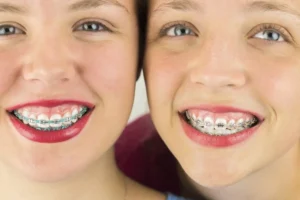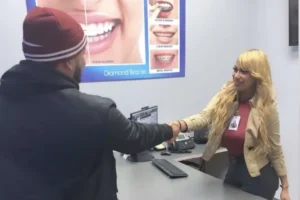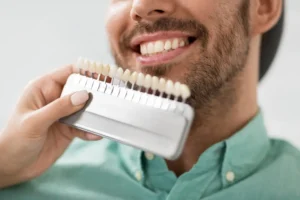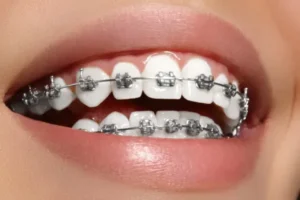Tooth Discomfort And Soreness
Experiencing pain or soreness as your teeth move to their correct positions is normal. Here are some braces pain relief techniques to help ease your discomfort:
- Take over-the-counter pain relievers to manage the pain.
- Try chewing sugarless gum to stimulate blood flow. Chewing may feel uncomfortable but is good for increasing blood flow.
- As your teeth move into their correct positions, they may feel loose – don’t worry, they are not going to fall out! They are merely shifting correctly. The looseness will fade as you get accustomed to the movement!
How Severe is the Pain from Braces?
When you’re wearing braces, you might feel discomfort or soreness. Similar to how your body feels after a workout or a minor tweak. This pain is usually minimal and will go away over time.
However, if the pain doesn’t go away or if you feel a sharp, shooting sensation, there might be a problem. In such cases, you should contact your orthodontist immediately. Severe pain is not normal.
Managing sores and ulcers with braces can be challenging. The impacted region could lead to pain and discomfort. But remember, it’s all part of the process of getting that perfect smile.
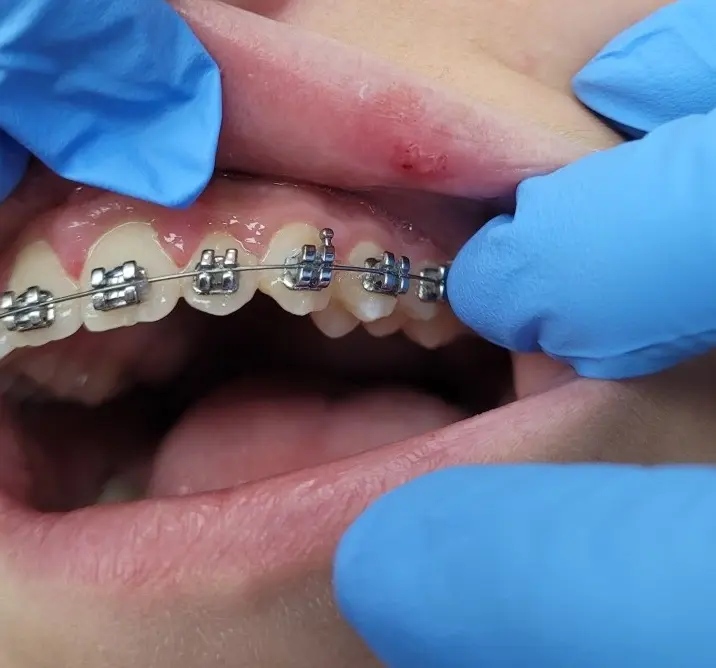
Ulcers or Sores Inside Your Mouth
Sometimes your teeth and gums may be irritated by contact with your braces; in certain cases, this irritation causes small sores or ulcers. While they can be uncomfortable, they are normal and will go away quickly.
- Avoid touching them with your fingers.
- Cover the irritating bracket or wire with pain relief wax and take over-the-counter pain medications if you feel discomfort.
- You may also find topic gels helpful, as they will slowly and safely eradicate your sores.
Is It Normal to Get Sores from Braces?
When you start your braces treatment, your mouth needs to adjust to the new appliance. This adjustment can cause your braces to rub against the inside of your mouth. This rubbing can lead to sores and ulcers.
However, as your mouth gets used to the braces, the frequency of these sores and ulcers may decrease. In some cases, they may even disappear entirely.
If you’re struggling with wounds and ulcers, fear not! You can do stuff to make it feel better. Keep an eye on the affected area and try things to reducing inflammation. Just keep in mind, handling these little hiccups is key to rocking your braces treatment.
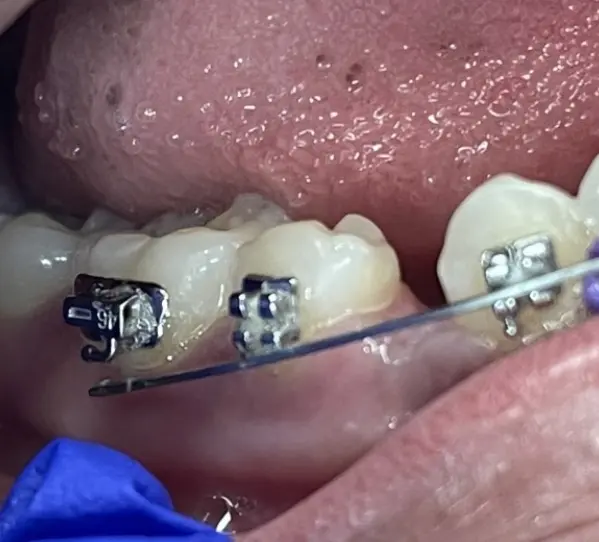
Braces Wire Slipped Out Completely
When “Fixing slipped braces wire at home,” there may be instances where the wire has completely slipped out from the molar tube. In such a scenario, you have the option to try and fit it back into the molar tube. You can do this using your fingers or with clean tweezers.
If you discover that you’re unable to put it back, don’t fret. You have the alternative to clip it back with clean nail clippers and remove the loose piece. Despite the wire being loose at one end, the treatment won’t be affected as the wire is still fixed in place by the other brackets.
Before you start, it’s a good idea to brush your teeth. This guarantees that your mouth is hygienic, lowering the chances of getting an infection. After brushing, rinse your mouth with warmed water. This can help soothe any discomfort caused by the slipped wire.
Finally, if there are any sharp edges causing discomfort, you can use a cotton swab to gently push them down. This quick fix can give you a breather until you meet up with the orthodontist soon. Remember, these steps are for managing the situation at home. Scheduling an appointment with your orthodontist is important to properly fix the slipped wire.
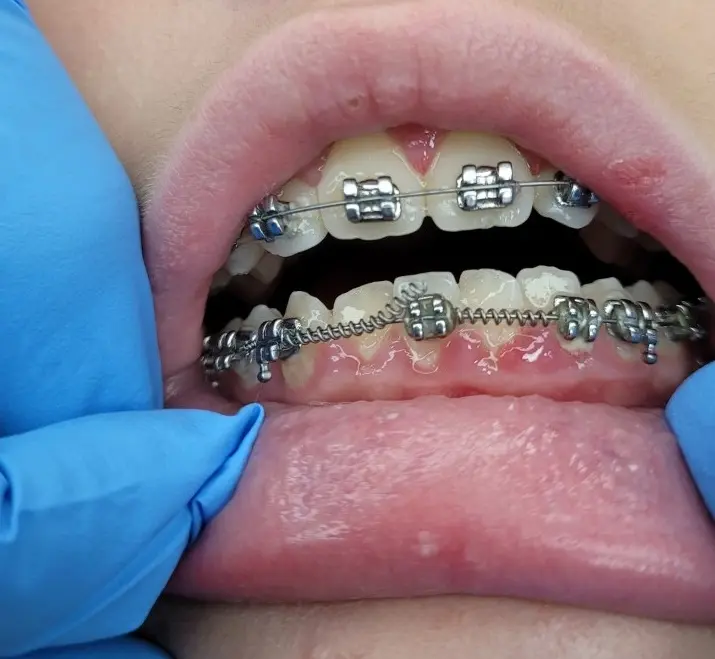
Open Coil Spring
Trauma, poor oral hygiene, and eating items like gum or crunchy candy can loosen coil springs. If this happens, you might be able to fix it yourself. Use a tweezer or your hands to put the coil back on the wire. But only do this if you’re confident.
If you’re not sure, use orthodontic wax to cover the sharp end. Then, make an appointment with your orthodontist.
Remember, certain foods can affect your oral health. Acidic foods can damage your teeth. So, try to eat softer foods like mashed potatoes or ice cream. You can also soothe your mouth with ice cubes or ice packs.
If you have pain, dissolve a teaspoon of salt in warm water. Rinse your mouth with this solution. It can help to reduce discomfort.
These steps should help you manage a loose coil spring. But always consult your orthodontist for professional advice.
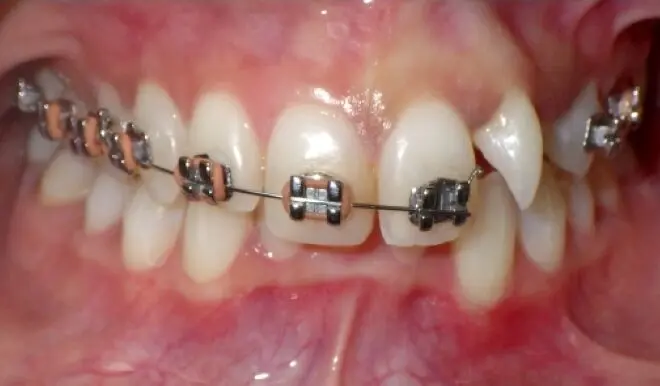
Poking Steel Tie
When you have braces, the steel ligatures connecting the wires and brackets may sometimes unwind. This can cause discomfort as they poke your lips, gums, or other parts of your mouth.
In dealing with a poking steel tie in braces, you can take some simple steps. Try to push the unwound wire back into place using your finger. Alternatively, you can use the clean eraser end of a pencil.
If these methods don’t work, consider using wax to cover the end of the poking wire. This can provide temporary relief until you can see your orthodontist for a more permanent solution.
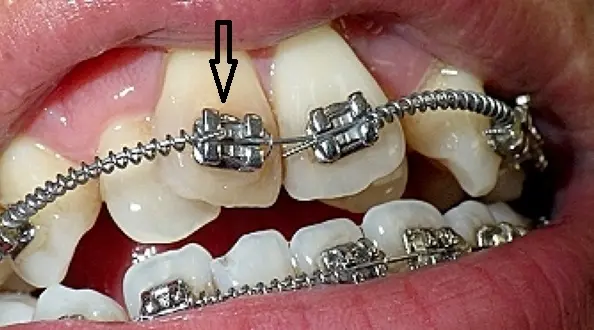
Lost Rubber Band
We secure the archwire to the brackets using elastic bands. This is good news because even if a band falls off, your treatment continues unaffected. The brackets hold the wire tightly. The rubber bands, also known as ligatures, are an extra safety measure.
You have the option to reattach the rubber bands to the bracket. You can do this yourself using a sterile tweezer. If you’re not comfortable doing this, you can wait until your next visit. If the wire starts loosening, you can push it back into place with a clean tweezer.
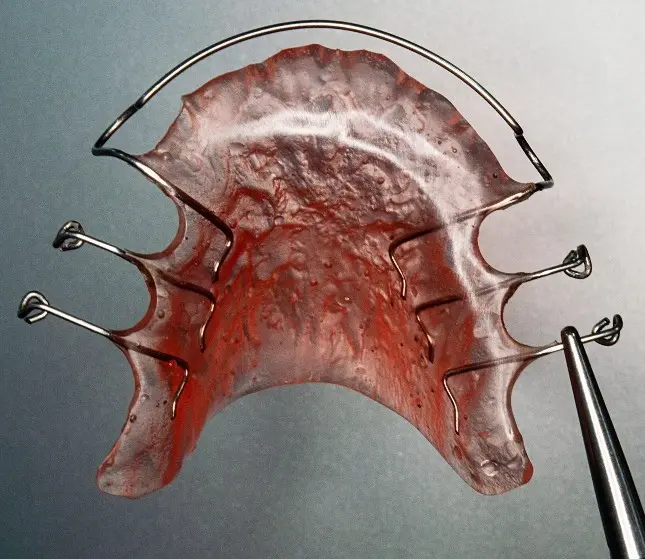
What if my Retainer Breaks?
If your retainer breaks, stop using it. Contact your orthodontist right away.
Retainers are crucial in orthodontic treatment. They maintain your smile and keep it healthy. If you don’t follow your orthodontist’s instructions about wearing your retainer, your teeth might shift back to their previous position.
A damaged retainer can exert improper force on your teeth. This can lead to an unwanted shift, causing problems similar to those you aimed to correct with braces.
Invisalign and lingual braces are types of braces that can also serve as retainers in orthodontic treatment. They help maintain the correct position of your teeth after the removal of braces. Should they get damaged, stop using them right away and get in touch with your orthodontist without delay.

